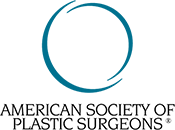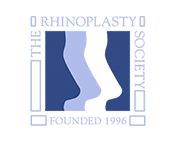I’m happy to say that I can answer that Google query.
In short, the honest answer is: it depends. Recovery depends on the magnitude of the surgery, the aggressiveness of the surgery, the areas operated on, and things your surgeon can do to minimize discomfort afterwards.
First, a brief history. For a period of time, it was believed by many that combining liposuction with an abdominoplasty (tummy tuck) was dangerous. The theory was that the remaining abdominal skin was being supplied by blood vessels that could be damaged during liposuction, and damaged blood vessels could lead to poor blood flow in the skin, and therefore the tummy skin could die (not a good outcome). Over time, pioneering plastic surgeons began to challenge this thinking, and recognized that, when done properly, liposuction preserves these blood vessels to the skin. Now, a plastic surgeon can perform aggressive liposuction combined with an abdominoplasty to provide a very dramatic result.
In terms of magnitude, there are several different tummy tuck techniques. Skin incisions are different lengths and the length of muscle tightening can differ. A longer incision, or a longer distance of muscle tightening (pelvis to the belly button vs. pelvis all the way up to the ribs) will usually cause more discomfort, and therefore a longer recovery. The type of anesthesia used also plays a role in recovery in terms of how quickly feel “like themselves” after surgery. Using conscious sedation (comfortable, but not fully asleep) will often lead to a faster recovery than general anesthesia (fully asleep) based on the amount and types of medications used.
In terms of the aggressiveness of the surgery, this is probably the biggest component that determines recovery. Liposuction hurts when performed aggressively. But to get all of your fat removed and achieve a dramatic result, one often needs to be aggressive. In my experience, patients that had “liposuction to my tummy and it wasn’t that bad” have good results and are pleased. Patients that had “liposuction to my tummy where it felt like a truck hit me, backed over me, and hit me again” have outstanding results that are sometimes difficult to believe, and are ecstatic. To get that dramatic, jaw dropping result, one typically needs to be more aggressive. And more aggressive liposuction, with the metal suction cannula coursing directly underneath the skin and on top of the muscle covering (the fascia), leads to more discomfort and more recovery time.
Also with aggressiveness, the amount of muscle tightening (plication) can lead to differences in discomfort and recovery lengths. Simply removing abdominal skin without doing any muscle tightening is uncomfortable but not really painful for many. Adding a small amount of muscle tightening creates more pain due stitches placed in the muscle and its covering (the fascia), and the nerves in the area get ticked off and let you know it. You can also get muscle spasms when you do a muscle tightening which are painful. Many surgeons bring your tummy muscles together so they are simply touching (anatomically where they should be), some other surgeons do a very aggressive muscle tightening where the sutures are placed very widely, and when the sutures are brought together and tightened, it folds the muscles on themselves and pulls in the waistline dramatically to give an hourglass appearance. Again, the more aggressive the muscle tightening, the more pain and spasms, and the longer the recovery.
A tummy tuck with liposuction is just a tummy tuck with liposuction, except when it isn’t (that was profound, wasn’t it?). Allow me to explain. Go to the pool or beach, and look at a lady in a bathing suit. You may notice a great tummy that is thin, tight, and flat. But something still looks a little off to you. What you may not fully notice is that while her tummy may be flawless, her back may have some fat and flab. This is one way to tell that a patient had a tummy tuck. The front and back don’t match.
The torso (chest, tummy, and backside) is a cylinder. To get a complete result, one should treat the entire cylinder if indicated. This is analogous to painting a room. If you paint one wall, it will look similar at best to the other walls. Or you can paint the entire room to get the best result. So, additional surgical locations lead to longer recovery. Liposuction of the back can hurt when it’s done aggressively. There is a very deep pocket of fat just above the buttocks that when liposuctioned aggressively causes a very elegant transition from the lower back to the buttock. It also gives the buttock a small lift. The resulting flowing curve is beautiful. But, going after this deep fat with the metal liposuction cannula hurts, as it is right on top of deeper fascia (muscle covering) and bone, which have quite a few nerves that will get ticked off and let you know it. As a side note, taking some of your own fat that was suctioned out, and placing it in areas that you want more full (fat grating) such as your buttocks, is entirely doable, and doesn’t add much to the recovery at all.
Now, there are some things that I can do to help with your recovery. For a while I used pain pumps/bulbs. These were often helpful, but were cumbersome to patients (you have extra tubes hanging out of you for several days and that can be annoying). I now routinely use a long acting (lasts about 3 days) numbing agent called Exparel. I can place it in the area around your tummy and your muscles to significantly reduce your discomfort. Most patients immediately after their surgery, when asked how painful their tummy is, say something like “it feels tight, but not too bad”. This answer is remarkably different from ones from patients that do not have the Exparel placed. Again, this is my personal experience with Exparel. I will also provide prescription pain medications and muscle relaxers for you to use as needed. And you will need them (especially if you are me and are a wimp when it comes to pain).
Having said that, if I were to perform aggressive liposuction to the back, liposuction to the tummy, and a very tight muscle plication, with an incision going from hip-to-hip, you will want to take 2 weeks off of work. That first week, you will be walking bent over due to how tight your tummy skin is, and by the end of the first week you will slowly be able to stand up straight. Your back will hurt (just walk for 5 minutes bent over at the waist and feel how sore your back muscles are). I recommend renting a walker to help with ambulating that first week. It will greatly help your back out. Of course, the tennis balls on the bottom, handlebar basket, and streamers for customization are optional. You will also want to sleep in a “beach chair” position. I recommend renting a recliner for that first week.
After that first week, which is the most difficult, things get better, but you won’t be back to feeling relatively “normal” for 2 weeks, which is why I recommend taking that second week easy and taking off work then, too. After two weeks, you’ll be good to go. Still a bit sore, but largely off of the prescription pain meds. A less involved surgery typically has a week-long recovery.
We will be friends before surgery. You will not like me right after surgery (read that last sentence again). I don’t like to sugar coat things. That first week will not be fun. After two weeks, we will be friends again. And when you see your results at the three month mark (when most of the swelling is gone), you will probably agree with most of my patients: that it was totally worth it.
This needs to be said. There are risks of the surgery. And the more aggressive the surgery, the greater the risk of complication. While I do strive for a dramatic result, my top priority that will not be compromised is your safety (read that one again, too). If you have the more aggressive surgery, make sure it is with a well-trained surgeon with significant experience doing these types of surgeries. I was lucky that during my advanced aesthetic surgery fellowship in Charlotte, I helped to perform these procedures very often. My fellowship director, Joseph Hunstad, teaches internationally to other plastic surgeons on this very topic, and has published a book on abdominoplasty (Atlas of Abdominoplasty). It was a pleasure to work side-by-side with him to learn his tips and tricks for a dramatic result while maximizing patient safety.
I’d be happy to talk with you in person about abdominoplasty and liposuction during a consultation. After a full assessment, I will let you know what component procedures would be best for you to obtain the shape you desire, and the likely recovery from your surgery. Hope to see you soon. After all, next summer is only 9 months away!





